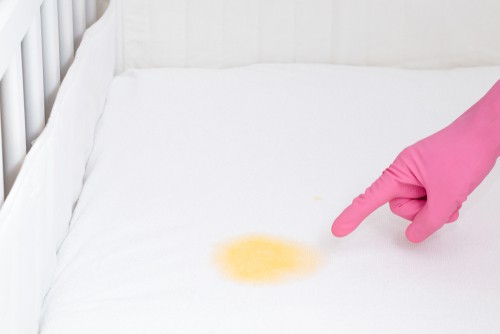
Dealing with Baby Stains: Formula, Baby Food, and Diaper Mishaps. Parenting comes with its unique set of challenges, and one of them is tackling those inevitable baby messes.
From formula spills to baby food mishaps and diaper disasters, dealing with baby stains is a part of the journey.
In this comprehensive guide, we’ll explore effective methods for handling and removing common baby stains, ensuring that your little one’s clothing, furniture, and surroundings stay clean and hygienic.
Understanding Common Baby Stains
Babies are experts at creating stains, and as parents, it’s essential to understand the types of baby stains you may encounter, why they can be stubborn, and why quick stain removal is crucial.
Types of Stains
Baby stains typically fall into three main categories:
- Formula Stains: These stains result from formula milk spills and can be challenging to remove due to the protein content in the formula.
- Baby Food Stains: When your little one is introduced to solids, baby food stains become a common occurrence. They can vary in color and composition depending on the food.
- Diaper Mishap Stains: These stains occur on baby clothing and fabrics when a diaper mishap takes place.
Stubborn Nature of Baby Stains
Baby stains can be particularly stubborn for several reasons:
- Protein Content: Formula stains contain proteins that can bind to fabric fibers, making them resistant to standard washing.
- Food Pigments: Baby food stains often contain pigments that can penetrate fabric fibers, leaving lasting marks.
- Enzymes in Diapers: Diapers contain enzymes that break down substances, but if left untreated, they can lead to persistent stains.
Importance of Quick Stain Removal
Addressing baby stains promptly is crucial because:
- Fresh stains are easier to remove than set-in stains.
- Lingering stains may become permanent and affect the appearance and longevity of baby clothing and fabrics.
- Prompt stain removal helps maintain a clean and hygienic environment for your baby.
Preparing for Stain Removal
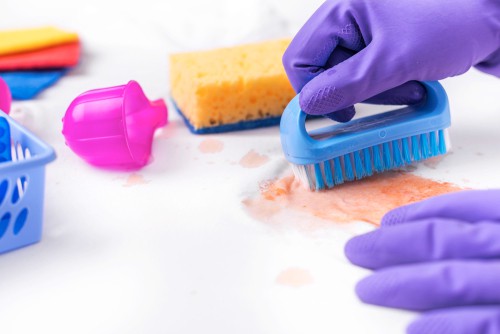
Before you embark on the journey of removing baby stains, it’s wise to assemble a stain removal toolkit. Here’s what you’ll need:
Stain Removal Toolkit
- White Cloth or Paper Towels: These are used to blot and absorb excess liquid or residue.
- Baby-Safe Stain Remover: Look for a stain remover specifically designed for baby clothing. Ensure it’s safe and gentle on your baby’s skin.
- Liquid Detergent: Opt for a mild and baby-friendly liquid detergent for laundering stained clothing.
- Baking Soda: Baking soda can be an effective natural stain remover.
- Hydrogen Peroxide: It can help break down stains and disinfect clothing.
- Soft Bristle Brush: A soft brush can be used to gently scrub stained areas.
Safety Considerations
When dealing with baby stains and stain removers, keep these safety considerations in mind:
- Read and follow the instructions on stain remover products carefully.
- Store stain removers out of your baby’s reach to prevent accidental ingestion.
- Rinse stained items thoroughly after applying stain removers to remove any residue.
How to Approach Different Types of Fabrics
Different fabrics may require slightly varied stain removal approaches. Here are some general guidelines:
- Cotton: Most baby clothing is made of cotton, which is relatively forgiving when it comes to stain removal. Follow the standard stain removal steps.
- Delicate Fabrics: For delicate fabrics, such as silk or wool, it’s essential to be gentle. Blot the stain rather than rubbing, and consider professional cleaning if needed.
- Synthetic Fabrics: Synthetic fabrics like polyester can handle more robust stain removal methods.
Stain Removal Techniques
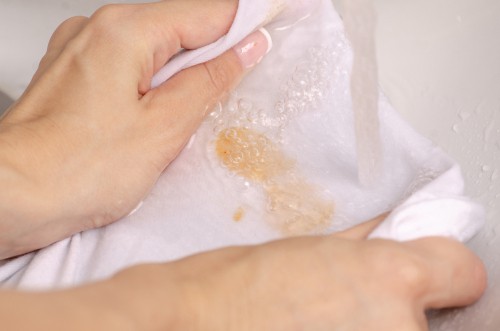
Now let’s delve into specific stain removal techniques for each type of baby stain.
Removing Formula Stains
Formula stains can be particularly stubborn due to their protein content. Here’s a step-by-step guide to tackle them:
- Act Quickly: As soon as you notice the stain, gently scrape off any excess formula with a spoon or dull knife. Avoid rubbing, as it can push the stain deeper into the fabric.
- Rinse with Cold Water: Hold the stained area under cold running water from the backside of the fabric. This helps to force the stain out rather than setting it in.
- Pre-treat with Baby-Safe Stain Remover: Apply a baby-safe stain remover to the stain. Gently rub the fabric together to work in the solution. Follow the product’s instructions for the best results.
- Launder as Usual: Wash the stained item as you normally would, following the care label instructions. Check that the stain is completely gone before drying. If the stain persists, repeat the stain removal process.
Effective Methods for Baby Food Stains
Baby food stains vary in color and composition, but you can effectively remove them with these steps:
- Scrape Off Excess: Begin by gently scraping off any excess baby food with a spoon or dull knife. Be careful not to spread the stain further.
- Rinse with Cold Water: Hold the stained area under cold running water from the backside of the fabric. This helps to remove as much of the food as possible.
- Pre-treat with Baby-Safe Stain Remover: Apply a baby-safe stain remover or a mixture of liquid detergent and water to the stain. Gently rub the fabric together to work in the solution.
- Launder Promptly: Wash the stained item promptly, following the care label instructions. Ensure the stain is completely gone before drying. If needed, repeat the stain removal process.
Tackling Diaper Mishap Stains with Ease
Diaper mishap stains can be challenging, but with the right approach, you can effectively remove them:
- Scrape-Off Solids: For solid diaper mishaps, gently scrape off the excess with a spoon or dull knife.
- Rinse with Cold Water: Rinse the stained area under cold running water to remove any remaining residue.
- Apply a DIY Stain Remover: You can create a DIY stain remover using common household items. Try this recipe:
- Ingredients:
- 1 tablespoon of baking soda
- 1 tablespoon of hydrogen peroxide
- A few drops of liquid detergent
- Instructions:
- Mix the ingredients to form a paste.
- Apply the paste to the stain and gently rub the fabric together.
- Allow it to sit for 15-30 minutes.
- Rinse with cold water.
- Ingredients:
- Launder with Care: Wash the stained item separately, following the care label instructions. Ensure the stain is completely gone before drying. If necessary, repeat the stain removal process.
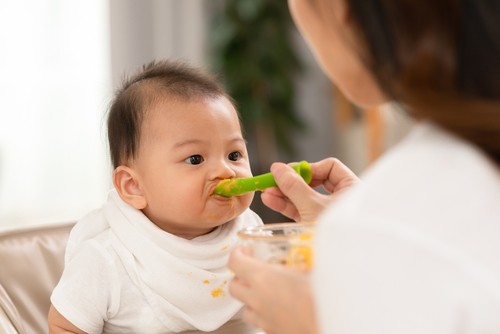
Baby-Friendly Stain Removers
When selecting stain removers for baby stains, opt for safe and gentle products on your baby’s skin. Here are some options:
Safe and Natural Stain Removers for Baby Clothing
- Lemon Juice: Lemon juice is a natural bleach alternative. Apply it to the stain, let it sit for a few minutes, and rinse with cold water.
- Vinegar: Mix equal parts of white vinegar and water and apply it to the stain. Gently blot the area, and then rinse with cold water.
- Baking Soda: Make a paste using baking soda and water, apply it to the stain, and let it sit for a while before rinsing.
Commercial Stain Removers Suitable for Baby Stains
- Baby-Safe Stain Removers: Look for stain removers specifically designed for baby clothing. They are formulated to be gentle yet effective.
- Stain Remover Pens: Stain remover pens are convenient for on-the-go stain treatment, especially when you’re away from home.
- Enzyme-Based Stain Removers: Some stain removers contain enzymes that break down proteins and can be effective for formula stains.
Avoiding Harsh Chemicals and Irritants
While removing baby stains, it’s essential to avoid harsh chemicals and irritants that may linger on clothing or fabrics. Ensure that the stain remover you use is free from these potentially harmful substances.
Laundering Baby Clothes
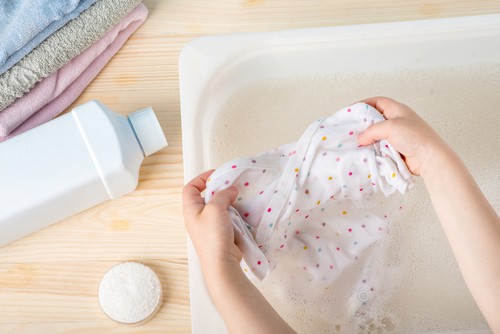
Proper washing techniques are essential for maintaining the quality and longevity of baby clothing. Here’s how to launder baby clothes effectively:
Washing Tips
- Separate Stained Items: Wash stained baby clothing separately from other laundry to prevent potential transfer of stains.
- Use a Mild Detergent: Choose a mild and baby-friendly liquid detergent that’s gentle on sensitive skin.
- Follow Care Label Instructions: Always follow the care label instructions on baby clothing for temperature settings and washing instructions.
- Check for Stains Before Drying: Before drying any stained items, check to ensure the stains are completely gone. Heat can set stains permanently.
Preserving Quality
To preserve the quality of baby clothing, consider these additional tips:
- Avoid using fabric softeners, as they can reduce the absorbency of baby clothing, especially for items like bibs and burp cloths.
- Opt for gentle or delicate wash cycles to prevent unnecessary wear and tear.
- Sunlight can naturally bleach and disinfect clothing, so consider hanging stained items in direct sunlight after washing.
Car Seat and Stroller Stain Removal
Stains can find their way onto car seats and strollers, but maintaining cleanliness and safety for your baby while on the go is essential. Here’s how to address stains in these baby essentials:
Removing Stains
- Check the Manufacturer’s Instructions: Review the manufacturer’s instructions for your car seat or stroller to ensure you follow their guidelines.
- Spot Cleaning: For minor stains, spot cleaning with a baby-safe stain remover or a mixture of liquid detergent and water can be effective.
- Fabric Covers: If your car seat or stroller has removable fabric covers, follow the care label instructions for washing.
Maintenance Practices
To keep your baby’s car seat and stroller in top condition:
- Regularly vacuum and wipe down surfaces to prevent the buildup of crumbs and dirt.
- Consider using removable, washable seat liners for added protection.
Baby Stains on Furniture and Carpets
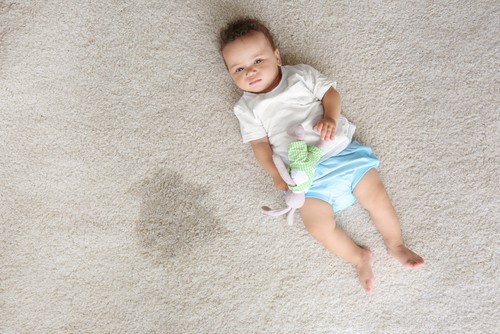
Baby stains can extend beyond clothing to furniture and carpets. Here’s how to handle them effectively:
Furniture Stains
- Blot Immediately: If a spill occurs on furniture, blot the area immediately with a clean cloth to absorb as much liquid as possible.
- Spot Cleaning: For fresh stains, use a baby-safe stain remover or a mixture of liquid detergent and water to spot clean. Test in an inconspicuous area first.
- Professional Cleaning: For stubborn or set-in stains on upholstery, consider professional cleaning services.
Carpet Stains
- Blot and Absorb: Similar to furniture stains, blot and absorb as much of the spill as possible using clean cloths or paper towels.
- Gentle Cleaning: Use a baby-safe carpet cleaner or a mixture of mild detergent and water to gently clean the stained area. Blot, don’t rub.
- Deep Cleaning: For deep cleaning and stain prevention, consider periodic professional carpet cleaning.
Frequently Asked Questions (FAQs)
What is the safest way to remove formula stains from baby clothing?
The safest way to remove formula stains is to act quickly.
Begin by gently scraping off any excess formula, then rinse the stained area with cold water from the backside of the fabric.
Pre-treat the stain with a baby-safe stain remover or a mixture of equal parts liquid detergent and water.
Launder the stained item following the care label instructions, ensuring the stain is completely gone before drying.
How can I prevent baby food stains from setting in?
To prevent baby food stains from setting in, it’s essential to act promptly.
Scrape off any excess food, then rinse the stained area with cold water from the backside of the fabric.
Pre-treat the stain with a baby-safe stain remover or a mixture of liquid detergent and water.
Launder the item promptly following the care label instructions to ensure the stain is completely removed before drying.
Are there any DIY stain removal solutions for diaper mishaps?
Yes, you can create a DIY stain remover for diaper mishap stains.
Mix one tablespoon of baking soda, one tablespoon of hydrogen peroxide, and a few drops of liquid detergent to create a paste.
Apply this mixture to the stain, gently scrub, and then rinse with cold water. Follow up by washing the stained item with an enzyme detergent following the care label instructions.
Can I use bleach on baby stains?
It’s best to avoid using bleach on baby stains, especially colored clothing, as bleach can damage fabrics and fade colors.
Instead, opt for baby-safe stain removers and follow the recommended stain removal techniques mentioned in this guide.
What should I do if a stain doesn’t come out after washing?
If a stain persists after washing, avoid drying the item, as heat can set stains.
Instead, remove the stain with a stain remover or detergent and repeat the stain removal process.
Launder the item again, and check for stain removal before drying.
Dealing with Baby Stains: Formula, Baby Food, and Diaper Mishaps – Conclusion
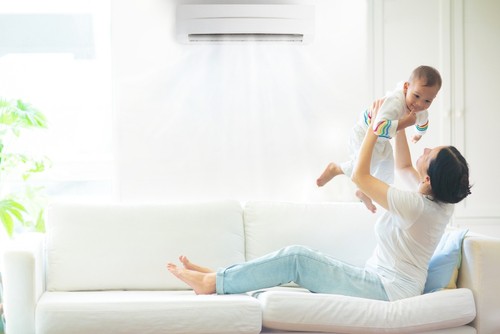
Dealing with baby stains may seem like a never-ending battle, but with the right knowledge and tools, you can conquer formula, baby food, and diaper mishap stains effectively.
Remember to act swiftly, use baby-safe stain removers, and follow the appropriate stain removal techniques for different fabrics.
By doing so, you’ll ensure that your baby’s clothing, furniture, and surroundings remain clean and hygienic.
As parents, it’s essential to stay proactive in stain removal, promoting a clean and hygienic environment for your baby in your Singapore home.
With these stain removal tips and techniques, you can focus on creating a safe and comfortable space for your little one to grow, explore, and thrive.
Are you looking for professional and reliable stain removal services or laundry cleaning services in Singapore? Contact us today!
